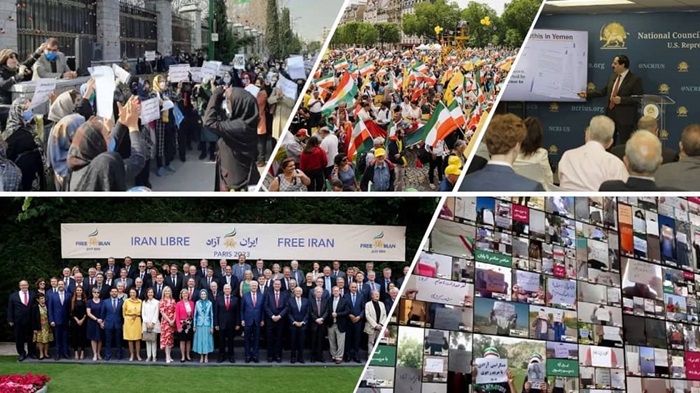

Amid these challenges, the Iranian people’s resilience and the organized resistance movement’s strategic mobilization stood out as beacons of hope for a nation striving for change.
Domestic Unrest and Economic Woes
Throughout the year, Iranians across various societal sectors voiced their dissent against the regime through nationwide protests and boycotts of elections, reflecting widespread discontent with the government’s policies.
Watch and judge how #Iran's economy is run by the regime pic.twitter.com/k2QtOj9KqS
— NCRI-FAC (@iran_policy) December 17, 2023
These movements were largely fueled by the deteriorating economic situation, with inflation rates soaring and the majority of the population being pushed below the poverty line.
The financial hardships faced by the average Iranian were stark, with many struggling to afford basic necessities amidst rampant corruption and mismanagement by the regime.
#Iranian Regime’s Fourfold Objectives in the #GazaCrisishttps://t.co/UXfRouGv2b
— NCRI-FAC (@iran_policy) November 9, 2023
Regional Conflict and International Implications
On the international front, Iran’s involvement in regional conflicts further isolated the country from the global community. The war that erupted on October 7, 2023, underscored the Iranian regime’s role in destabilizing the region, despite initial denials from Tehran’s leadership.
The subsequent proxy warfare, notably through the use of Houthi proxies in Yemen and Hezbollah in Lebanon, not only exacerbated regional tensions but also threatened global security by endangering maritime trade routes.
NCRI Commentary | Iran Protests in 2023: A Year of Persistent Discontent
These protests stand out for their duration and geographic range, as well as deep political undercurrents with powerful chants like “Death to Khamenei.”#IranRevoIution #FreeIran2024https://t.co/63SpCSfsfv— NCRI-U.S. Rep Office (@NCRIUS) January 6, 2024
The international response, led by the United States, aimed to curb Iran’s aggressive maneuvers. However, the events of October 7 highlighted the need for a more direct approach to addressing the threat posed by the regime’s fundamentalist ideology, leading to a growing consensus on the importance of holding Tehran’s leadership accountable for their actions.
The Rise of Organized Resistance
Amidst the turmoil, the Iranian organized resistance movement emerged as a formidable force against the regime. Demonstrating remarkable proficiency in mobilizing domestic networks and garnering international support, the movement has become a symbol of the Iranian people’s undeterred spirit and determination to achieve freedom and democracy.
The international community’s growing recognition of the resistance’s efforts signifies a pivotal shift in the global stance towards Iran, acknowledging the necessity of supporting the Iranian people’s struggle against tyranny.
#IranianResistance, Achievements and Activities in 2023https://t.co/tolMEoH6TG
— NCRI-FAC (@iran_policy) January 4, 2024
Conclusion
The year 1402 was a testament to the Iranian people’s unwavering resolve in the face of adversity. As the nation grapples with economic instability, political repression, and the specter of regional conflict, the courage and resilience of its citizens, alongside the strategic mobilization of the organized resistance, offer a glimmer of hope for a future defined by freedom, justice, and peace.
The events of this tumultuous period not only challenged the legitimacy of the clerical dictatorship but also set the stage for a potential paradigm shift in Iran’s political landscape, with implications that reverberate beyond its borders.

MEK Iran (follow us on Twitter and Facebook), Maryam Rajavi’s on her site, Twitter & Facebook, NCRI (Twitter & Facebook), and People’s Mojahedin Organization of Iran – MEK IRAN – YouTu







